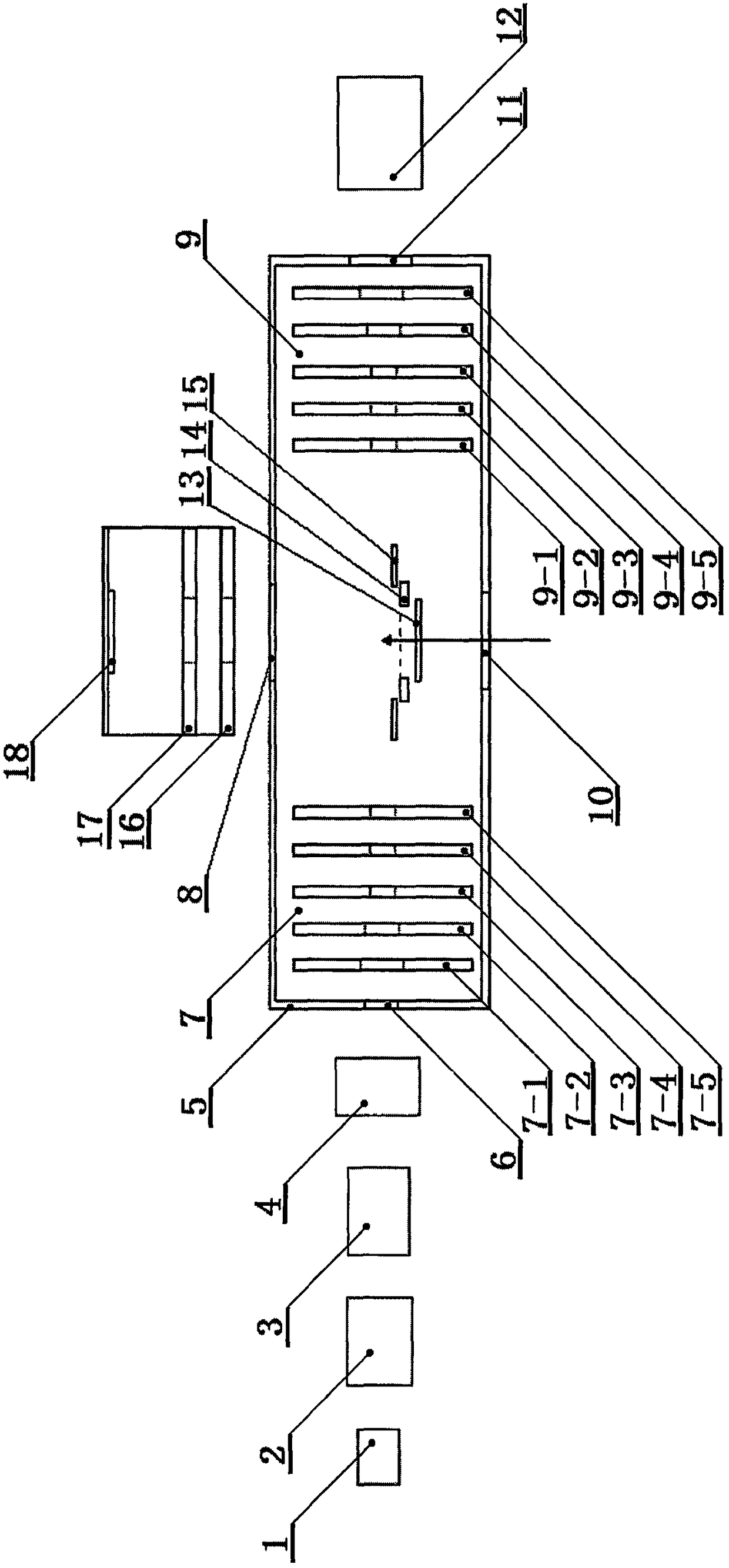A device for studying photodissociation at low temperature
A photo-induced separation and low-temperature technology, applied in electronic/ion optical devices, parts of particle separator tubes, spectrometer combinations, etc. , Improve energy accuracy, compact and simple structure
- Summary
- Abstract
- Description
- Claims
- Application Information
AI Technical Summary
Problems solved by technology
Method used
Image
Examples
Embodiment Construction
[0022] Such as figure 1 It is a schematic diagram of the structure of the present invention. A device for studying photo-induced separation at low temperature mainly includes an ion source (1), an accelerator (2), a time-of-flight mass spectrometer (3), and a particle mass selector (4) located in an ultra-high vacuum environment. , magnetic shield (5), ion beam entrance (6), electrode I (7-1), electrode II (7-2), electrode III (7-3), electrode IV (7-4), electrode V (7-5) focus electrode group (7), photoelectron exit (8), by electrode VI (9-1), electrode VII (9-2), electrode VIII (9-3), electrode IX (9- 4), mass selection electrode group (9), laser entrance (10), ion exit (11), ion detector (12), electronic background reduction plate (13), reflection plate ( 14), ion correction plate (15), extraction electrode (16), focusing electrode (17) and electron detector (18), described focusing electrode group (7), mass selective electrode group (9), electronic background reduction Pl...
PUM
 Login to View More
Login to View More Abstract
Description
Claims
Application Information
 Login to View More
Login to View More - R&D
- Intellectual Property
- Life Sciences
- Materials
- Tech Scout
- Unparalleled Data Quality
- Higher Quality Content
- 60% Fewer Hallucinations
Browse by: Latest US Patents, China's latest patents, Technical Efficacy Thesaurus, Application Domain, Technology Topic, Popular Technical Reports.
© 2025 PatSnap. All rights reserved.Legal|Privacy policy|Modern Slavery Act Transparency Statement|Sitemap|About US| Contact US: help@patsnap.com

